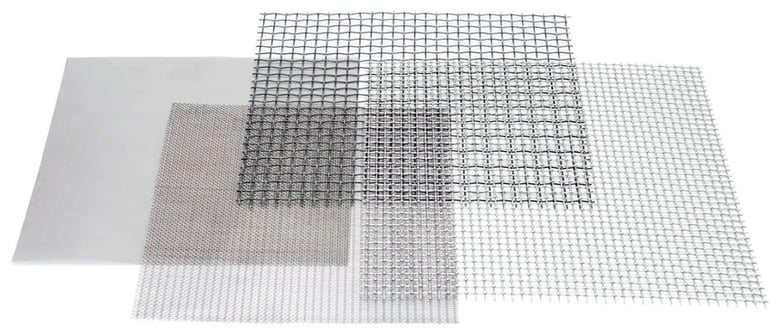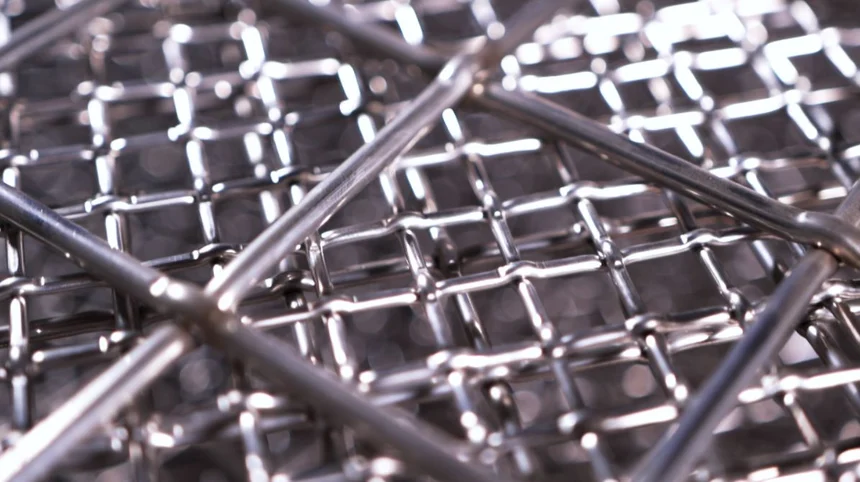Wire Mesh in Heat Exchangers: Understanding the Benefits
From cooling internal components in electronics to heating an entire convection with an HVAC system, heat exchangers are more pivotal to everyday life than one may think. As these devices are designed to improve the energy conservation and efficiency of your devices, there are naturally several components that must work in conjunction to produce the desired result.
Now, heat exchangers will be subjected to extreme conditions, including corrosive atmospheres and extreme temperatures. For this reason, materials such as woven wire mesh are widely used to facilitate the heat exchange process.
This leaves us with the question: How exactly does woven wire mesh fit into the design of a heat exchanger?
W.S. Tyler has been helping weave wire mesh into hundreds of variating applications for over 150 years and strives to share the knowledge within our four walls to help you understand if the versatile material is right for you.
With this in mind, we wrote the following article highlighting how woven wire mesh performs when integrated into a heat exchanger. It will cover:
- What a heat exchanger is
- How heat exchangers work
- What woven wire mesh is
- How woven wire mesh facilitates the functions of a heat exchanger
- How much woven wire mesh costs
What Is a Heat Exchanger?
A heat exchanger is an instrument specifically designed to transfer heat between various elements efficiently. Commonly used in HVAC, boilers, and refrigeration systems, heat exchangers are typically selected based on their ability to reach precise heat transfer rates, withstand operating conditions, and the footprint of their profile.
That said, there are five prominent types of heat exchangers:
- Plate
- Air-cooled
- Finned tube
- Plate-fin
- Shell and tube
How Does a Heat Exchanger Work?
A typical heat exchanger works to convey thermal energy between either two liquids or two gases. To do so without mixing the two fluids, heat exchangers are outfitted with two channels: a hot channel and a cool channel.
As the hot and cold fluids make their way through their channels, they begin to flow close to one another. It's at this point in the temporal energy is conveyed from the hot channel to the cold channel.
The transfer of thermal energy is facilitated via conduction, convection, or radiation.
Regardless of how the thermal energy is transferred, the process will continue until the fluid in both the hot and cold channels are at the same temperature. Once equal temperatures are achieved, the fluids leave the exchanger through an outlet valve.
What Is Woven Wire Mesh?

Woven wire mesh, or simply wire mesh, is a series of individual wires that become interlocked during a specialized weaving process, forming a metal fabric-like material. As virtually every aspect of wire mesh is customizable, parameters such as the wire diameter, alloy, weave pattern, and mesh count be tailored to best accommodate your performance requirements.
For an in-depth breakdown of what woven wire mesh is, reference the article below:
How Does Woven Wire Mesh Benefit the Functions of a Heat Exchanger?
Wire mesh is used to separate the two channels of fluid within the heat exchanger. In doing so, its unique characteristics deliver an increased number of contact points in which thermal energy can be transferred between the two fluid channels.
The increased number of contacts ultimately results in a heat exchanger that performs more efficiently.
Additionally, you can experiment with different weave patterns to better control the flow of fluids. Different weave types deliver different wire orientations, which can help you fine-tune how the fluids interact with various elements of the exchanger and convey thermal heat.
Wire mesh is widely known for its durability. Translating to mechanical strength, corrosion resistance, and heat resistance, this durability can empower you to implement the structural support needed for the fluid chambers to combat collapse and deformation.
Often referred to as filter cloth, wire mesh can also be used as a filter medium.
Heat exchangers subjected to filtration-like applications can introduce particles into the hot and cold fluid streams. Implementing wire mesh can ensure these particles don't pass the outlet valve and damage equipment downstream.
For more information regarding the filtration capabilities of woven wire mesh, read the following article:
How Much Does Woven Wire Mesh Cost?
When looking to implement woven wire mesh in a heat exchanger, it is important to note that wire mesh is available in industrial rolls, cut-to-size pieces, and fabricated components. That said, the factors that will influence the cost of your mesh will fluctuate depending on the form factor you purchase.
Industrial rolls and cut-to-size pieces are widely preferred by those wanting to handle the fabrication of wire mesh components in-house. When ordering industrial woven wire, the price of the order will be influenced by:
- State of the materials market
- Mesh specifications
- Value-added processes required
- Dimension of the roll/piece
- Compliance requirements (i.e., DFARS)
- Order Quantity
NOTE: Order quantity is one of the biggest factors that can help control the cost of industrial woven wire mesh orders.
For more information on the cost of industrial rolls and cut-to-size pieces, read the following article:
Fabricated wire mesh components are perfect for those that want to utilize the capabilities of custom wire mesh solutions but lack the capacity to produce them in-house. If you are seeking to have a wire mesh supplier fabricate custom components for you, the cost of the components will be influenced by:
- State of the materials market
- Mesh speciation
- Layer configuration
- Value-added processes required
- Component profile
- External fabrication requirements
- Labor
- Order Quantity
To learn more about the cost of fabricated wire mesh components, read the article below:
Note: woven wire mesh is broken down into two categories: square mesh and filter cloth. Filter cloth weaves tend to cost more than square mesh weaves as filter cloth requires a more labor-intensive weaving process.
While filter cloth weaves will naturally provide better filtration performance, square mesh weaves can too be used for filtration applications and are found to provide better throughput.
Filter Cloth vs. Square Mesh: Which Should I Use?
Heat exchangers work to either make cold things warm or warm things cold. To do so, wire mesh is often employed to keep the internal liquid channels separate, convey thermal energy efficiently, and keep damaging particles at bay.
It was established wire mesh is distinguished as either a filter cloth or square mesh weave. When designing a new heat exchanger or fine-tuning an established design, you will find yourself experimenting with both types of mesh in an effort to pinpoint the perfect solution.
This is exactly why understanding the core differences between the two is critical to the success of your product.
Striving to drive innovation throughout the wire mesh industry, W.S. Tyler eagerly works to leverage our 150 years of experience to help you develop a product you can proudly stand behind.
To begin learning more about how the different mesh variants compare so you can education-based decisions, read the following article:
About Ronnie Brown
Ronnie is the Content Writer for W.S. Tyler and has four years of experience as a professional writer. He strives to expand his knowledge on all things particle analysis and woven wire mesh to leverage his exceptional writing and graphic design skills, creating a one-of-a-kind experience for customers.




